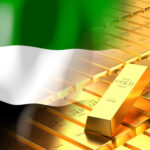Introduction
Emerging markets—often characterized by rapidly growing economies, volatile currencies, and large untapped markets—have a unique relationship with gold. In many of these nations, gold serves not only as a hedge against economic instability but also as a key driver of economic growth through gold mining and trading.
From the bustling gold markets of India and China to the gold-rich mines of Africa and Latin America, gold trading plays a significant role in shaping the economic trajectories of these emerging markets. In this article, we explore the impact of gold on emerging economies and how these nations leverage gold trading to ensure financial resilience.
The Appeal of Gold in Emerging Markets
Gold has long been ingrained in the cultural and economic fabric of emerging markets. In countries like India and China, gold is deeply intertwined with tradition, especially in the form of jewelry. These two nations alone account for nearly half of the global demand for gold, primarily due to cultural practices where gold is used in weddings, festivals, and as a symbol of wealth.
India, for instance, imports a significant portion of the world’s gold, making the country a major player in determining global gold prices. During times of economic uncertainty, both Indian and Chinese consumers turn to gold as a stable store of wealth. This demand creates a strong, resilient market for gold, which in turn influences the global supply and demand dynamics.
Gold Mining’s Economic Impact in Emerging Economies
Beyond consumer demand, many emerging markets are also major gold producers. Countries like South Africa, Ghana, Peru, and Indonesia are home to vast gold mining industries that provide employment, contribute to GDP, and bring foreign exchange into the country.
In Ghana, for example, gold mining contributes around 8% to the country’s GDP and employs hundreds of thousands of people directly and indirectly. The revenue from gold exports also helps to stabilize the country’s currency, providing much-needed capital for infrastructure projects and economic development. Similarly, Peru is one of the world’s largest gold producers, and its mining industry plays a crucial role in supporting the nation’s economy.
However, gold mining in these countries is not without challenges. Environmental degradation, labor issues, and the exploitation of local communities are persistent concerns. Many emerging market governments face the difficult balancing act of encouraging foreign investment in gold mining while ensuring that the social and environmental costs are not too high.
Gold as a Hedge Against Currency Devaluation
Emerging market economies are often more susceptible to currency devaluation due to external shocks, inflation, or political instability. In such scenarios, gold serves as a vital asset that can hedge against these risks.
For instance, Venezuela, which has faced severe economic sanctions and hyperinflation, turned to gold as one of the few remaining assets that could provide the government with a lifeline. Venezuela’s central bank reportedly sold off a significant portion of its gold reserves to keep the economy afloat during its worst economic crisis.
Other emerging markets, particularly in Africa and Latin America, use gold reserves to back their currencies and strengthen their financial standing. By maintaining healthy gold reserves, these nations can attract foreign investment and protect their currencies from volatile swings, which is critical in times of crisis.
Foreign Investments and Gold
Foreign direct investment (FDI) in emerging markets is often linked to the gold sector. International mining companies frequently invest in these nations to tap into their gold reserves, creating jobs and boosting local economies. In countries like Tanzania and the Democratic Republic of Congo, FDI in the gold sector has been instrumental in developing mining infrastructure, training local workers, and driving economic growth.
However, the influx of foreign investment comes with its own set of challenges. Emerging markets must navigate the political and economic complexities of ensuring that foreign companies do not exploit their natural resources without providing sufficient benefits to the local population.
Conclusion
Gold plays a multifaceted role in emerging markets, serving both as a store of value and a key economic driver. From the booming demand for gold jewelry in India and China to the vast gold mining industries in Africa and Latin America, the metal has an undeniable impact on these economies. As these nations continue to develop, the strategic role of gold in their financial systems will remain crucial, providing them with a hedge against economic uncertainty and a foundation for growth.






